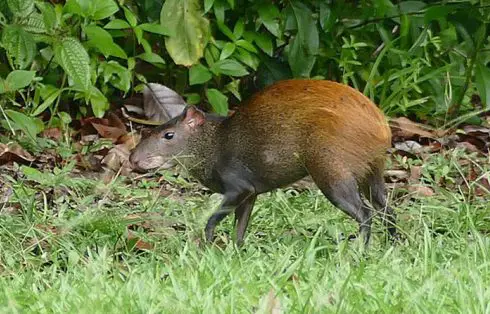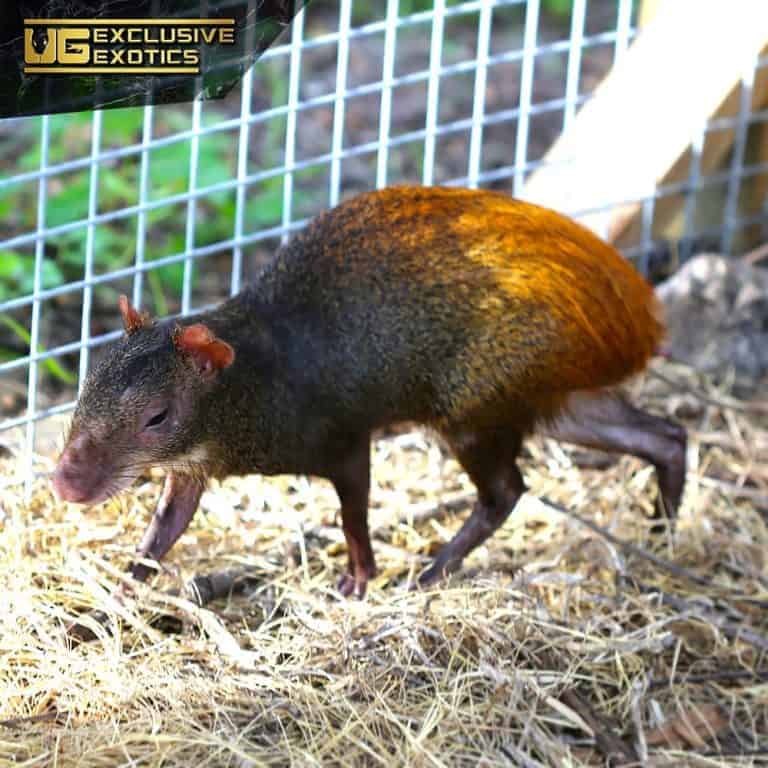

The forefeet are used to rake the hair and draw it within reach of the incisors which are then used as a comb (Smythe 1978). Agoutis can move with remarkable speed and agility (Nowak 1999).Īgoutis devote considerable time to grooming to remove parasites, ticks and mites. If danger threatens, they pause motionless with one forefoot raised.
#RED RUMPED AGOUTI PREDATORS FULL#
They often sit in an erect position, from which they can dart out of at a full speed if necessary.

They walk, trot, or gallop on their digits and can jump vertically at least two meters from a standing start (Nowak 1999). When behaving aggressively, an agouti sometimes erects the long hairs of its rump, thumps the ground with its hind legs or uses a number of vocalizations, the most common of which sounds like that of the bark of a small dog (Nowak, 1999).Īgoutis are basically diurnal, but shift their activities to night hours if they are hunted or commonly bothered by people. Territorial defense sometimes includes vicious fighting which results in serious wounds. When other agoutis enter a claimed territory they are driven off, usually by the male. Each pair occupies a territory of approximately 1-2 hectares which contain fruiting trees, and a source of water. The basic social unit of the agouti is made up of a pair that mate with one another for life. Status: wild 10.0 years Max Planck Institute for Demographic Research There is little information on lifespan in agoutis. Young born during the fruiting season have a substantially greater chance of surviving than those born during the off season. Offspring become completely separated from the mother upon the arrival of a new litter, because of parental aggression, or due to lack of food. The newborn are fully furred, their eyes are open, and they are able to run in their first hour of life (Smythe 1978). The female has its own den apart from the young. As the offspring grow, the mother relocates the litter to a larger den. The dens often exactly match the size of the young (Grzimek 1990). The females dig caves for their young or bring them to old lairs they constructed usually located in hollow logs, among tree roots, or under tangled vegetation.

They often build dens and numerous sleeping spots in hollow logs, among limestone boulders, under roots of trees or other vegetation. Agoutis are closely associated with water and often found along the banks of streams, rivers and lakes. In Peru, they are confined to the Amazonian region where they are found in all parts of the low selva rainforest zone and many parts of the high selva zone (altitudes of up to 2,000 meters) (Nowak 1999).

Dasyprocta punctata, commonly known as Central American agoutis, is found from southern Mexico to northern Argentina, and has been introduced to the Cayman Islands.Ĭentral American agoutis are found in forests, thick brush, savannas, and cultivated areas.


 0 kommentar(er)
0 kommentar(er)
